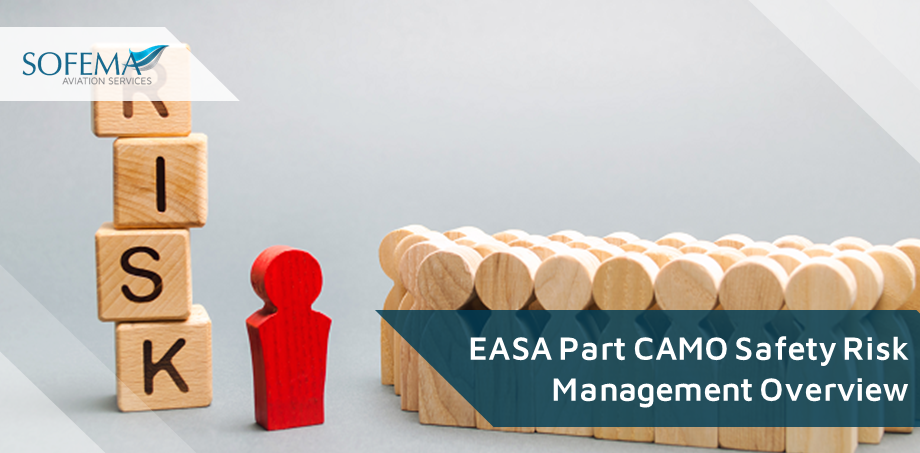Sofema Aviation Services Considers the Basic Aviation Safety Risk Management Process
What is Safety Risk Management?
Safety risk management is a key component of any SMS and involves analyzing all key business processes and identifying any safety hazards. The next step is to assess the risks and mitigate them.
The risk is essentially a subjective assessment of a combination of the magnitude of the likelihood & severity of a particular hazard and its potential for causing harm within our organisational system.
Hazard Identification
Hazard identification is the foundation of the risk management process in an SMS and may be conducted reactively, proactively and even predictably.
Reactive, Proactive & Predictive!
Analysing the hazards identified as a result of incident or accident investigations is an example of a reactive methodology.
A proactive one might include evaluating risks after audits, inspections, or mandatory reports, while a predictive methodology could involve considering the results of system vulnerability analysis of operation on a day-by-day basis.
There are different kinds of hazards to consider in aviation operations:
– Visible hazards are easily seen, smelt, heard, tasted or felt
– Hidden or latent hazards are hazards that are not easily detected
– Emerging hazards may at first seem minor and do not receive attention, but soon become worse and could cause great damage to the system
What is Risk-Based Decision Making?
The primary goal of risk management is to employ safety-related data to identify and control the potential consequences of hazards in the aviation system before an accident or serious incident occurs.
Risk management becomes much more effective with the classification of safety data using common taxonomies that allow the data to be viewed in more dimensions to detect hazards more efficiently.
Data analysis may include inputs from any aviation safety-related data from one or more aviation sectors, so it is important to use common taxonomies.
Effective hazard identification is dependent on the availability of data. Even if hazard analysis is performed on new processes or products not yet in operation, data describing the process or product is required.
Data Management
Data Management is the continuous development and maintenance of processes and procedures to assure that an organization has the data it needs and that data is organized, reliable, and appropriate.
Safety management is a data-driven system, therefore it depends on an effective data management process. For effective safety data management, an organization should define the data required in order to accomplish the desired objective of minimising exposure.
Follow this link to our Library to find & download related documents for Free.
What`s more :
a) Introducing a Cutting Edge, Effective & Affordable CAMO Software
b) For access to a world leading CAMO Diploma Program with 25 separate courses please see the following links
Next Steps
Sofema Aviation Services and Sofema Online – Provide Classroom, Webinar & Online Regulatory & Vocational Training.
For further details please email team@sassofia.com
Tags:
aviation safety, CAMO, Hazard, Aviation Safety Management System, Aviation Risk, EASA Part – CAMO




